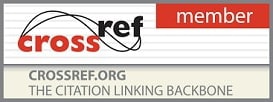P-ISSN: 2349-6800, E-ISSN: 2320-7078
Journal of Entomology and Zoology Studies
2017, Vol. 5, Issue 2
Effects of natural environmental conditions on testicular Histometric Dynamics of Bats (Pipistrellus kuhlii)
Mutayyaba Awais, Anas Sarwar Qureshi, Munayyaba Awais, Mahmood- ul-Hassan and Muhammad Usman
The present study was aimed to elucidate the actual period when male bats are reproductively active and determine its high and low spermatogenic activity. Total of seven specimens of Pipistrellus bats were captured from four different localities of Faisalabad District of Punjab, Pakistan. Histological sections were prepared by paraffin tissue preparation technique and stained by hematoxylin and eosin (H&E). Morphometric analysis of specimens was performed by Image J® analysis software. Statistical data showed significantly (P<0.001) higher values of studied parameters of testis in peak spermatogenic phase (September) than in low (December) spermatogenic phase. Histomicrographs showed that males, collected in August, had large number of spermatids with very few or no spermatozoa in the epididymis. Testes showed no testicular activities in the winter hibernation period. The weight of testes was relatively higher in August which declined gradually from December to February. It is conceivable from the present data that season has a substantial impact on the testicular activity in bats (Pipistrellus kuhlii). There is an annular testicular cycle which is followed by the bats. The testicular activity showed a peak during August and September which declines gradually from December to February. Testes showed no testicular activities in winter hibernation.
Pages : 750-754 | 997 Views | 94 Downloads
How to cite this article:
Mutayyaba Awais, Anas Sarwar Qureshi, Munayyaba Awais, Mahmood- ul-Hassan, Muhammad Usman. Effects of natural environmental conditions on testicular Histometric Dynamics of Bats (Pipistrellus kuhlii). J Entomol Zool Stud 2017;5(2):750-754.
Related Journal Subscription
Important Publications Links
Important Links










